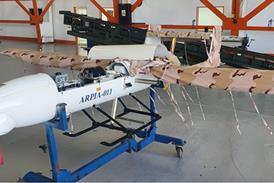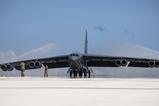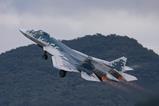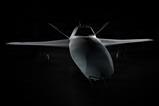US defence manufacturer Kratos plans to assemble a new family of small, lightweight turbofan engines in the state of Oklahoma.
The powerplants will be offered as a propulsion solution for long-range munitions like cruise missiles and the new classes of uncrewed fighter jets being developed by the US Air Force and others, leading Kratos to describe the forthcoming line of turbofans as “strike engines”.
Kratos is partnered on the effort with propulsion heavyweight GE Aerospace, with the pair having signed a joint development agreement at the 2024 Farnborough air show in the UK.
One year later, the effort to produce the new “GEK” family of engines is moving forward, with Kratos announcing the selection of Bristow, Oklahoma as the site of a new assembly plant.
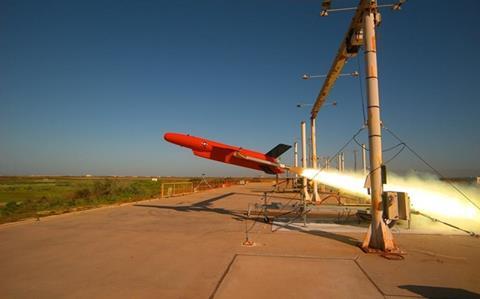
Speaking ahead of the Paris air show on 15 June, Kratos president of turbine technologies Stacey Rock said facility will begin low-rate production in late 2026, initially with two engine designs – the GEK 800 and GEK 1500.
“These are tabletop-size engines,” Rock says, describing the turbofans as “less than a couple feet” in diameter.
The GEK 800 will offers 800lb (3.6kN), with the GEK 1500 representing a scaled-up version of the same engine design.
Although the Kratos does not yet have any confirmed production contracts in place, Rock says the company is “leaning forward” with an initial production target of 500-1000 engines annually at the Bristow plant.
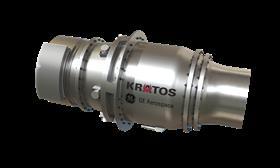
By bringing that capacity to market over the next year Kratos hopes to capitalise on the surging interest amongst Western defence forces in stockpiling large arsenals of long-range precision weapons.
Existing cruise missiles such as Lockheed Martin’s Long-Range Anti-Ship Missile and Joint Air-to-Surface Standoff Missile are currently produced in the hundreds per year, with Lockheed working to expand that capacity to beyond 1,000 annually.
Defence industry disruptors such as Anduril are seeking to quickly gain market share within that space by developing families of low-cost cruise missiles designed for more rapid production rates.
At the same time, the USAF is seeking to quickly field a new class of uncrewed fighter jets, with other services looking at their own options for small autonomous aircraft with a price point below that of a traditional combat aircraft.
Rock says that each of the new weapon systems brought online represents a potential engine demand of 500 to 1,000 units annually.
“Over a few engine lines, you’re quickly talking thousands of engines per year in this class,” he notes.
“Unfortunately, it doesn’t look like peace will break out any time soon,” Rock adds. “This is a strategic need for our country.”
When it comes to the economics, Rock says Kratos and GE will be able to keep the price low for the new GEK small turbofans because unlike conventional jet aircraft, cruise missiles and autonomous fighters are not being designed with longevity in mind.
“These are systems that a have a mission time of several hours, up to a couple of hours, over dozens of flights,” he notes. “These are not engines that are going to run for 5,000 hours.”
GE’s chief of defence programmes Amy Gowder in 2024 said the GEK 800 would be designed for a lifespan in the hundreds of cycles, as opposed to current GE Aerospace engines which are designed to operate for 2,000 to 10,000 cycles.
Kratos had been studying the concept of a low-cost, short-life turbofan for several years before the company decided to partner with GE Aerospace in 2024 to bring the concept to market.
“We needed a big partner,” Kratos chief executive Eric DeMarco told FlightGlobal at the Farnborough air show last year. “These are things we just cannot do practically on our own in the time period to be first to market and to win.”
The company has invested $25 million in developing the new GEK production facility in Oklahoma, with construction scheduled to begin later this year.
Although the site will initially be focused on the GEK 800 and 1500 models, Rock says larger powerplants are also in the works.
“We certainly have anticipated a whole family of these strike engines that could be upwards of 3,000 to 6,000lb-thrust in the future as well,” Rock says.
Without offering specifics about engine or vehicle type, he confirms a GEK engine will “one day” power a Kratos-designed aircraft.
Rock also confirms the new engines would be available to US allies and partners, pending the necessary approval of by authorities in Washington.





